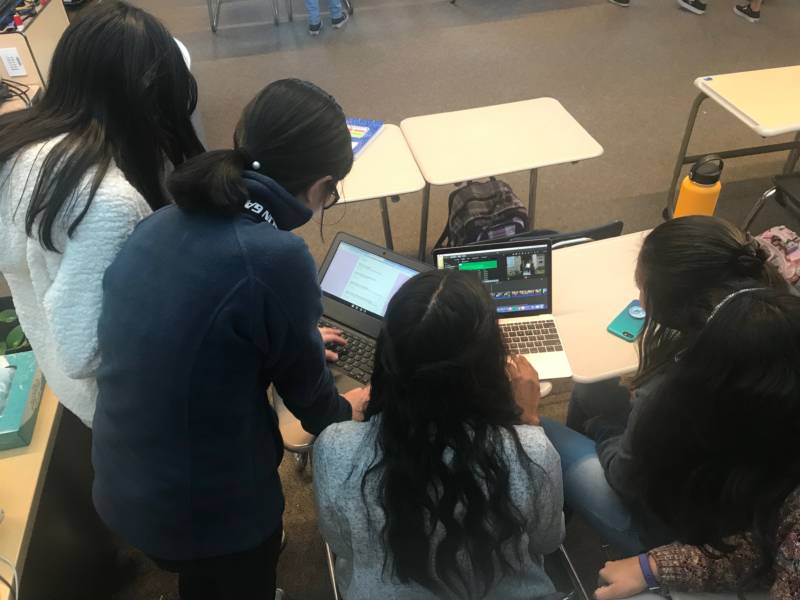While access to technology has not changed my core pedagogy, it has revolutionized the assessments that I am able to offer my students. Long gone are the multiple choice tests that required rote memorization and regurgitation of facts. My students are now showcasing their new knowledge with interactive maps, group projects, digital portfolios, Google Slide Decks and YouTube videos.
My advanced sophomore English students create several videos throughout the year, beginning with a short satire. After reading Brave New World and Fahrenheit 451, students must showcase their understanding of satire, voicing their criticism of a societal norm, including but not limited to: celebrity gossip, gender norms, academic expectations, political controversies, violence, self-image and specific campus issues. Students have complete autonomy over costuming, scripts and props, and many choose to address topics that directly affect them in day-to-day life. When I first introduced this project, many students created a commercial or PSA because the majority of the examples I showed were in that format. However, since the first implementation of this assignment and the introduction of other examples, students have varied the format of their criticisms.
To model the expectations of the video project, my colleague and I utilized our school green screen kit (consisting of an ipad, Green Screen by DoInk app, green fabric and tripod) to record our video example. Several groups have also used the kit for their own videos with great success. My colleague and I focused our criticism on the annual controversy over Starbucks’ holiday cup design, highlighting our society’s obsession and contention over paper cup decoration while more pressing catastrophes are unfolding all over the world. We completed the video in two takes (I should not have worn a green-tinted shirt that day—I blended in to the green screen background!) and found the ipad app easy to use when inserting our background images.
Creating our own video was beneficial in several ways.
- It gave me a chance to use the app and equipment to provide technical assistance.
- It gave me hands-on experience with the process I was requiring of my students.
- It gave students an example that is not professional grade or with famous actors, making the expectations more accessible and possible.
